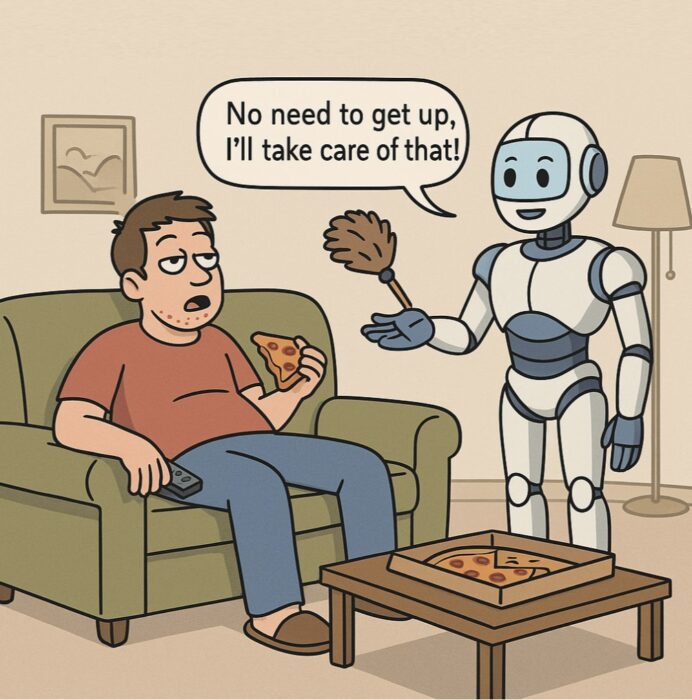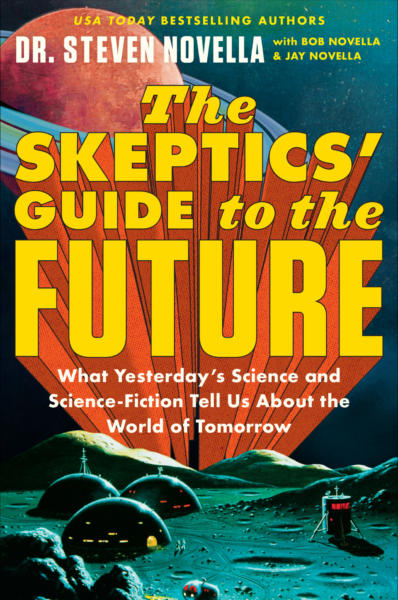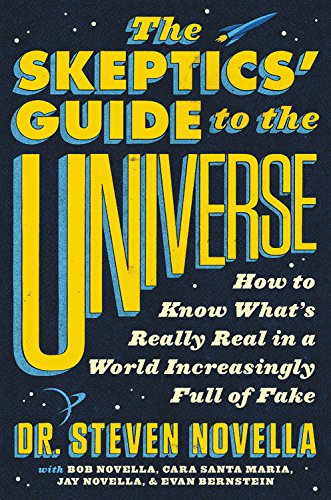Jul
31
2025
 The Japan Atomic Energy Agency reported earlier this year that is has developed and tested a battery with depleted uranium as the active material of the negative electrode. Why would they do this, and what role could such a battery play? First let’s look at the details (which are sparse).
The Japan Atomic Energy Agency reported earlier this year that is has developed and tested a battery with depleted uranium as the active material of the negative electrode. Why would they do this, and what role could such a battery play? First let’s look at the details (which are sparse).
The battery uses depleted uranium and iron as the electrodes with a liquid electrolyte. The prototype battery was able to generate 1.3 volts, a little less than a AA battery (1.5 volts). They were also able to discharge and recharge it 10 times with little loss of capacity. That’s the basic info I have – not very impressive. Grid storage batteries typically operate in the 400-800 volt range. You can just connect batteries in series to add their voltages, so one battery like the prototype would be a single cell of a larger battery pack. What we really need to know is the capacity of this battery, which was not reported. Also – 10 cycles is nothing. Grid storage batteries would need to be stable over thousands of recharge cycles.
As is almost always the case, the developers are working on “scaling up” their prototype – making it more efficient with higher voltage and capacity. That means the technology is not ready for prime time yet. They are also reporting:
“The research team is now developing flow cells including electrodes for a higher-capacity battery. The larger design would use 650 tonnes of uranium and have a capacity of 30,000 kilowatt-hours, roughly equivalent to the daily electricity supplied to 3,000 households in Japan.”
That is reasonable capacity for grid storage, but again this is the plan, not yet reality. So – why even bother using depleted uranium for a battery design? The big limitation with uranium is that it is radioactive, which means that such a battery would need shielding and is affected by nuclear safety regulations. While this is a regulatory issue, the amount of radiation is minor. Depleted uranium is mostly U238, which has a half-life of 4.468 billion years. The longer the half life the lower the intensity of the radiation – so this is giving off a tiny amount of radiation over a very long time. Enriched uranium, is mostly U235, which is highly radioactive (half life of 700 million years) and U234 (half life of 246,000 years), and is mostly removed from the depleted uranium. So really the radioactivity, while an issue, is not a deal-killer.
Continue Reading »
Jul
29
2025
I wasn’t planning on doing a follow up to my recent post on AI so quickly, but a published commentary on the issue makes a good point of discussion. I know it can get tiring to see so much news and commentary about AI, but we are in the middle of a rapidly evolving and potentially disruptive technology, so an active and dynamic conversation is needed. Also, yesterday I was giving a seminar to high school STEM students on critical thinking and media savvy, and the students were eager to raise the question of AI and what impact it has. They very much wanted to know how to navigate this world they are inheriting overwhelmed with AI-generated misinformation and deep fakes. How bad is it going to get, and what should they do?
Like many such questions we can focus on two levels – individual and societal. This question very much needs to be addressed issue by issue, but generally speaking I am a proponent of dealing with societal issues with societal solutions, and not just dumping all the burden and responsibility on individual citizens. This does not mean individuals should not take responsibility for themselves, only that this should not be the only solution. Let’s take crime as an example. There are steps that individuals can take to make themselves less vulnerable to crime, but that is not the ultimate solution to a society overwhelmed by crime. We also need police, social programs, good street lighting, and other measures to reduce overall crime.
The same is true with AI-generated deep fakes, misinformation, disinformation, and just low quality slop. Since my talk yesterday was on critical thinking, I focused on what we can do as individuals. This is basically scientific skepticism 101. Evaluate the source of any information and always try to track back any claim to its original source. Do not accept someone else’s narrative about that information – if it’s important, take the time to find out for yourself. Also, do not let other people curate information for you, because that let’s them control your information ecosystem and create the narrative for you. Do not rely on any one source for information. Seek out different sources and different perspectives, and specifically seek out information that contradicts or falsifies any claim you are facing (especially if it’s something you want to be true).
Continue Reading »
Jul
22
2025
 Avi Loeb is at it again. He is the Harvard astrophysicist who first gained notoriety when he hypothesized that Oumuamua, the first detected interstellar object, might be an alien artifact. His arguments were pretty thin, not taken very seriously by the scientific community, and mostly did not pan out. However, Oumuamua has left the solar system and so any unanswered questions will remain forever unanswered. But Loeb has been riding his fame and his alien artifact narrative ever since, founding the Galileo Project dedicated to looking for alien technological artifacts. Recently, NASA discovered the third every interstellar object, and the first interstellar comet, 3I/ATLAS. (“3I” is simply the nomenclature for the third interstellar object, and “ATLAS” for the Asteroid Terrestrial-impact Last Alert System that made the discovery.) Loeb recently published a paper and is blogging that this too shows “anomalies” deserving of exploring the ET technology hypothesis. And again – I am not impressed.
Avi Loeb is at it again. He is the Harvard astrophysicist who first gained notoriety when he hypothesized that Oumuamua, the first detected interstellar object, might be an alien artifact. His arguments were pretty thin, not taken very seriously by the scientific community, and mostly did not pan out. However, Oumuamua has left the solar system and so any unanswered questions will remain forever unanswered. But Loeb has been riding his fame and his alien artifact narrative ever since, founding the Galileo Project dedicated to looking for alien technological artifacts. Recently, NASA discovered the third every interstellar object, and the first interstellar comet, 3I/ATLAS. (“3I” is simply the nomenclature for the third interstellar object, and “ATLAS” for the Asteroid Terrestrial-impact Last Alert System that made the discovery.) Loeb recently published a paper and is blogging that this too shows “anomalies” deserving of exploring the ET technology hypothesis. And again – I am not impressed.
Let me jump ahead a bit and say up front – I am not against exploring the alien hypothesis, pretty much in any context. Even though the probability may be low, the payoff would be huge, and it’s worth a consideration. I am not against looking for alien technological signatures. This may, in fact, be the best method for detecting an alien technological civilization. I also think that serious academics and scientists should be taking such efforts seriously and there should be no academic shame in engaging in them. So I am with Loeb to that extent.
What bothers me about Loeb is that his arguments are so terrible. He is just another classic example of an academic and scientist who has no apparent experience with scientific skepticism and therefore is falling for common pitfalls. He also appears to not have learned anything in the last seven years, which is greatly disappointing. In fact, I would argue that he is hurting his stated greater cause (with which I largely agree), to make searching for alien technology academically respectable. Loeb is essentially engaging in anomaly hunting, and shows no signs of understanding what that means. Let’s take a look at his latest list of apparent “anomalies” to see what I mean.
Continue Reading »
Jul
21
2025
 I have been away on vacation for the last week and a half, so I thought I would ease back into blogging with a light non-controversial topic – the Epstein Files. OK – let’s all take a collective deep breath. Everyone – and I mean everyone – I talk to about this issue has strong feelings and beliefs about it. Even some of my close fellow skeptics have a hard time wrapping their head around what the most logical and objective opinion to have on this issue is. I have struggled as well. I don’t plan on making a hard case for one interpretation, or doing a deep dive on the political implications. If you want to read about that, there is plenty to feast on.
I have been away on vacation for the last week and a half, so I thought I would ease back into blogging with a light non-controversial topic – the Epstein Files. OK – let’s all take a collective deep breath. Everyone – and I mean everyone – I talk to about this issue has strong feelings and beliefs about it. Even some of my close fellow skeptics have a hard time wrapping their head around what the most logical and objective opinion to have on this issue is. I have struggled as well. I don’t plan on making a hard case for one interpretation, or doing a deep dive on the political implications. If you want to read about that, there is plenty to feast on.
I do want to explore a couple of aspects of this case from a skeptical perspective, mostly having to do with conspiracy thinking, how that works, and how it feeds our current social media ecosystem. To quickly review the basic facts, Jeffrey Epstein was a wealthy financier, although I have read that there is significant uncertainty as to how, exactly, he made his millions. He used his money partly to cozy up to celebrities, politicians, and scientists. This list includes Donald Trump, which is why we are all still talking about it. Epstein also apparently had an appetite for young girls and used his money and the influence he was able to get from it to secure a steady stream of underage girls to his properties, where he sexually abused them.
Epstein essentially ran what many refer to as a child sex trafficking ring. He pled guilty in Florida to one count of solicitation of a minor in 2008 (plus another count of prostitution, but not of a minor), and was given a light sentence and was able to shield himself from federal prosecution. He hired some high-power lawyers to essentially make his legal problems go away, and then he resumed his activities. Then in 2019 he was indicted again in New York federal court. By this time the complaints and the case had grown too large to ignore or for him to just make go away with some legal power. Prosecutors determined that the prior plea deal did not block a new prosecution, so he was arrested. While being held in federal prison he was found dead by apparent suicide in his cell. This was shortly after being taken off suicide watch.
Two main questions remain about the case: Did Epstein really kill himself in his cell, or was he murdered? Or perhaps he was taken off suicide watch so that he could take his own life. The second question is – is there a list of “clients” that took part in the child sex ring, and if so, who is on that list? Let me start with the first question.
Continue Reading »
Jul
07
2025
 Artificial Intelligence (AI) is unavoidable. It’s now a part of our daily lives as it has been steadily infiltrating the technology we use every day, whether you realize it or not. I remain somewhat in the middle in terms of the hype-to-technological-miracle spectrum. I don’t think, as some fellow skeptics do, that the current batch of AI is all hype and nothing new. Machine learning, neural networks, and large language models have clearly turned a corner. Companies are now willing to spend millions, even hundreds of millions, to train models on vast sets of data. The latest AI apps are powerful. They are genuinely accelerating the pace of research and development, for example, accomplishing in hours or days what previously took weeks or months. But current AI also has clear limitations. It makes mistakes, and can even confidently (it appears to the end-user) proclaim as facts things it just completely fabricated, including entire scientific references. On the creative side (which I use often) it’s still mostly derivative dreck.
Artificial Intelligence (AI) is unavoidable. It’s now a part of our daily lives as it has been steadily infiltrating the technology we use every day, whether you realize it or not. I remain somewhat in the middle in terms of the hype-to-technological-miracle spectrum. I don’t think, as some fellow skeptics do, that the current batch of AI is all hype and nothing new. Machine learning, neural networks, and large language models have clearly turned a corner. Companies are now willing to spend millions, even hundreds of millions, to train models on vast sets of data. The latest AI apps are powerful. They are genuinely accelerating the pace of research and development, for example, accomplishing in hours or days what previously took weeks or months. But current AI also has clear limitations. It makes mistakes, and can even confidently (it appears to the end-user) proclaim as facts things it just completely fabricated, including entire scientific references. On the creative side (which I use often) it’s still mostly derivative dreck.
I look at AI as an interesting and potentially powerful tool that is flawed and limited. The outcome depends entirely on how it is used, and this is where I think the true risk of rapidly introducing new AI tools into society lies. It’s disruptive in good and bad ways, and if we are not careful it will be mostly in the bad ways. I also think we are facing the silicon valley culture of “move fast and break things” combined with an attitude of “just get out of my way” when it comes to any regulation or quality control. It’s a reasonable corporate strategy to “break things” internally as you are exploring new technology. I really don’t care how many ships Musk blows up if that process leads to a working safe rocket. But they appear to be moving fast and breaking things out there in the world in ways that affect people and society.
How is the use of AI going wrong? One important way is that it makes it easy for people to be lazy. This is something I have long worried about existentially for humanity. I now think of this as the WALL-E syndrome – in a society run by AI and robots (or any such system) that can totally take care of your needs, it’s easy to sit back and do nothing. It’s possible we evolved a certain laziness as an efficiency mechanism – accomplish tasks efficiently, conserve energy and resources.
Continue Reading »
 The Japan Atomic Energy Agency reported earlier this year that is has developed and tested a battery with depleted uranium as the active material of the negative electrode. Why would they do this, and what role could such a battery play? First let’s look at the details (which are sparse).
The Japan Atomic Energy Agency reported earlier this year that is has developed and tested a battery with depleted uranium as the active material of the negative electrode. Why would they do this, and what role could such a battery play? First let’s look at the details (which are sparse).
 Avi Loeb is at it again. He is the Harvard astrophysicist who first gained notoriety
Avi Loeb is at it again. He is the Harvard astrophysicist who first gained notoriety  I have been away on vacation for the last week and a half, so I thought I would ease back into blogging with a light non-controversial topic –
I have been away on vacation for the last week and a half, so I thought I would ease back into blogging with a light non-controversial topic –  Artificial Intelligence (AI) is unavoidable. It’s now a part of our daily lives as it has been steadily infiltrating the technology we use every day, whether you realize it or not. I remain somewhat in the middle in terms of the hype-to-technological-miracle spectrum. I don’t think, as some fellow skeptics do, that the current batch of AI is all hype and nothing new. Machine learning, neural networks, and large language models have clearly turned a corner. Companies are now willing to spend millions, even hundreds of millions, to train models on vast sets of data. The latest AI apps are powerful. They are genuinely accelerating the pace of research and development, for example, accomplishing in hours or days what previously took weeks or months. But current AI also has clear limitations. It makes mistakes, and can even confidently (it appears to the end-user) proclaim as facts things it just completely fabricated, including entire scientific references. On the creative side (which I use often) it’s still mostly derivative dreck.
Artificial Intelligence (AI) is unavoidable. It’s now a part of our daily lives as it has been steadily infiltrating the technology we use every day, whether you realize it or not. I remain somewhat in the middle in terms of the hype-to-technological-miracle spectrum. I don’t think, as some fellow skeptics do, that the current batch of AI is all hype and nothing new. Machine learning, neural networks, and large language models have clearly turned a corner. Companies are now willing to spend millions, even hundreds of millions, to train models on vast sets of data. The latest AI apps are powerful. They are genuinely accelerating the pace of research and development, for example, accomplishing in hours or days what previously took weeks or months. But current AI also has clear limitations. It makes mistakes, and can even confidently (it appears to the end-user) proclaim as facts things it just completely fabricated, including entire scientific references. On the creative side (which I use often) it’s still mostly derivative dreck.




